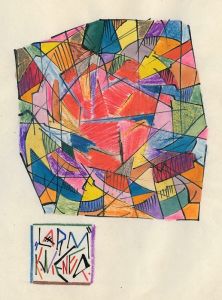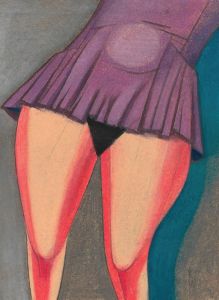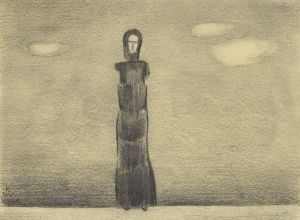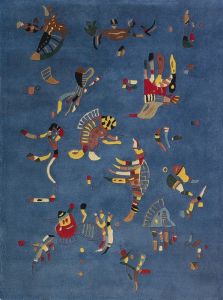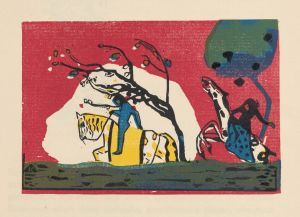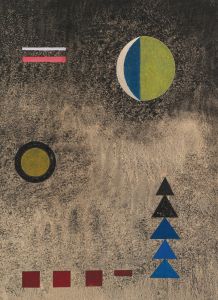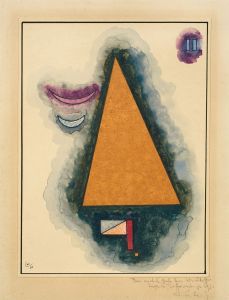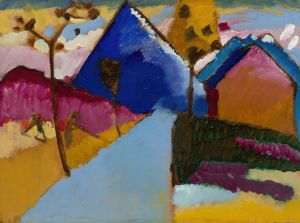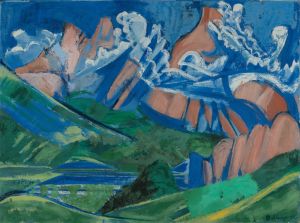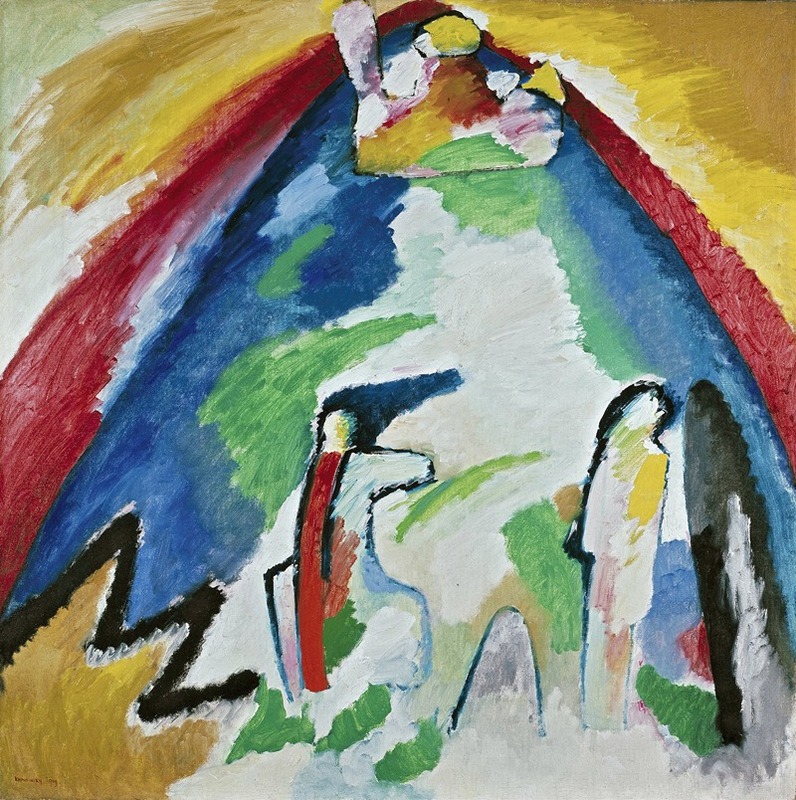
Berg
A hand-painted replica of Wassily Kandinsky’s masterpiece Berg, meticulously crafted by professional artists to capture the true essence of the original. Each piece is created with museum-quality canvas and rare mineral pigments, carefully painted by experienced artists with delicate brushstrokes and rich, layered colors to perfectly recreate the texture of the original artwork. Unlike machine-printed reproductions, this hand-painted version brings the painting to life, infused with the artist’s emotions and skill in every stroke. Whether for personal collection or home decoration, it instantly elevates the artistic atmosphere of any space.
"Berg" (Mountain) is a painting by the Russian artist Wassily Kandinsky, created in 1909. Kandinsky is widely considered one of the pioneers of abstract art, and his work during this period reflects his transition from figurative to abstract painting. "Berg" is an important piece within this context, showcasing his evolving style and innovative approach to color and form.
The painting depicts a mountainous landscape, rendered in a vibrant and expressive manner. Kandinsky's use of bold colors and dynamic brushstrokes creates a sense of movement and energy, which is characteristic of his work during this time. The composition is dominated by the mountain, which is depicted in a stylized and somewhat abstract manner, with sharp angles and contrasting colors that give it a sense of depth and dimensionality.
Kandinsky's interest in the spiritual and emotional power of art is evident in "Berg." He believed that colors and forms could evoke specific feelings and states of mind, and he sought to convey this through his work. The painting's vivid palette and dramatic composition are intended to evoke a sense of awe and wonder, capturing the viewer's imagination and drawing them into the scene.
"Berg" is also notable for its use of color theory, which was a central aspect of Kandinsky's artistic philosophy. He was deeply influenced by the ideas of Goethe and other color theorists, and he believed that different colors could have specific psychological effects. In "Berg," the use of contrasting colors, such as the blues and greens of the mountain against the warm tones of the sky, creates a dynamic and harmonious composition that is both visually striking and emotionally resonant.
The painting is part of Kandinsky's broader body of work from this period, which includes other notable pieces such as "Improvisation 7" and "Composition IV." These works are characterized by their bold use of color, abstract forms, and expressive brushwork, all of which are evident in "Berg." This period of Kandinsky's career is often seen as a turning point, as he began to move away from representational art and towards a more abstract and symbolic style.
"Berg" is housed in the Städtische Galerie im Lenbachhaus in Munich, Germany, which holds one of the most significant collections of Kandinsky's work. The painting is an important example of his early abstract style and provides valuable insight into his artistic development and the evolution of modern art.
Overall, "Berg" by Wassily Kandinsky is a significant work that exemplifies the artist's innovative approach to color, form, and composition. It reflects his transition towards abstraction and his belief in the spiritual and emotional power of art, making it a key piece in the history of modern art.





